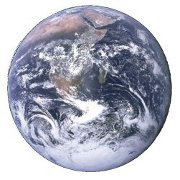
Custom Search
Animals in Faroe Islands
The Faroe Islands are located in Norwegian Sea, and is considered to be a Maritime Subarctic climate. The islands are cool with lots of wind and average about two hundred and sixty days of rain. the Faroe Islands' birds are primarily seabirds and birds that prefer an open landscape- as the Faroe Islands lack any woodland sort of area. Some of the bird species found on the Faroe Islands include: Black Guillemont, European Starling, Common Guillemont,  Winter Wren, and
Winter Wren, and  Common Eider. The Pied Raven was once unique to the Faroe Islands, however, throughout the twentieth century they have become extinct. As for mammals, there are few species that are wild to the Faroe Islands and all were introduced by man. The three wild species include:
Common Eider. The Pied Raven was once unique to the Faroe Islands, however, throughout the twentieth century they have become extinct. As for mammals, there are few species that are wild to the Faroe Islands and all were introduced by man. The three wild species include:  Mountain Hare,
Mountain Hare,  Brown Rat, and
Brown Rat, and  House Mouse. There is also a domesticated sheep that is native to the Faroe Islands, the Faroes; it is shown on the coat of arms of the Faroe Islands. These sheep are small and hardy and are used both for a food source and sheared for their wool to create knitwear. There were once sheep on the uninhabited island of L'tla D'mun, but they went extinct in the 1860s. Grey seals are common on the shoreline. Long-finned Pilot Whales and killer whales are also found in the waters of the area. The Long-finned Pilot Whales are locally hunted by the islanders, as is their tradition. the Faroe Islands does not offer much in regards to habitats. It is primarily grassland in the lowlands. However, the further up in terrain the more rough and rugged it becomes- giving way to rocky peaks and coastal cliffs. This can be explained by the fact that the the Faroe Islands are dominated by basalt lava- a rock type that weathers quickly and supports bacteria life more than anything else. It is a rough terrain that requires hardy animals and people to live there.
House Mouse. There is also a domesticated sheep that is native to the Faroe Islands, the Faroes; it is shown on the coat of arms of the Faroe Islands. These sheep are small and hardy and are used both for a food source and sheared for their wool to create knitwear. There were once sheep on the uninhabited island of L'tla D'mun, but they went extinct in the 1860s. Grey seals are common on the shoreline. Long-finned Pilot Whales and killer whales are also found in the waters of the area. The Long-finned Pilot Whales are locally hunted by the islanders, as is their tradition. the Faroe Islands does not offer much in regards to habitats. It is primarily grassland in the lowlands. However, the further up in terrain the more rough and rugged it becomes- giving way to rocky peaks and coastal cliffs. This can be explained by the fact that the the Faroe Islands are dominated by basalt lava- a rock type that weathers quickly and supports bacteria life more than anything else. It is a rough terrain that requires hardy animals and people to live there.





Click here for a list of endangered animals in Faroe Islands.
Carnivores in Faroe Islands
Cross fox Gray sealDolphins, porpoises, and whales in Faroe Islands
Killer whale Common porpoise North atlantic right whale Common rorqual Long-finned pilot whale Bottlehead Atlantic white-sided dolphin White-beaked dolphin Information about the animals living in Faroe Islands is brought to you by "List of countries of the world", your first stop in discovering all countries and animals of the world.
Information about the animals living in Faroe Islands is brought to you by "List of countries of the world", your first stop in discovering all countries and animals of the world.The animals displayed on this page are grouped in their scientific order. View also countries of the world ordered by:
- List of TLD's
- Country dialling codes
- Population
- Kilometers of coastline
- Square kilometers of land
- Square kilometers of water
- Birth rate
- Death rate
- Irrigated land
- Countries starting with A
Privacy policy